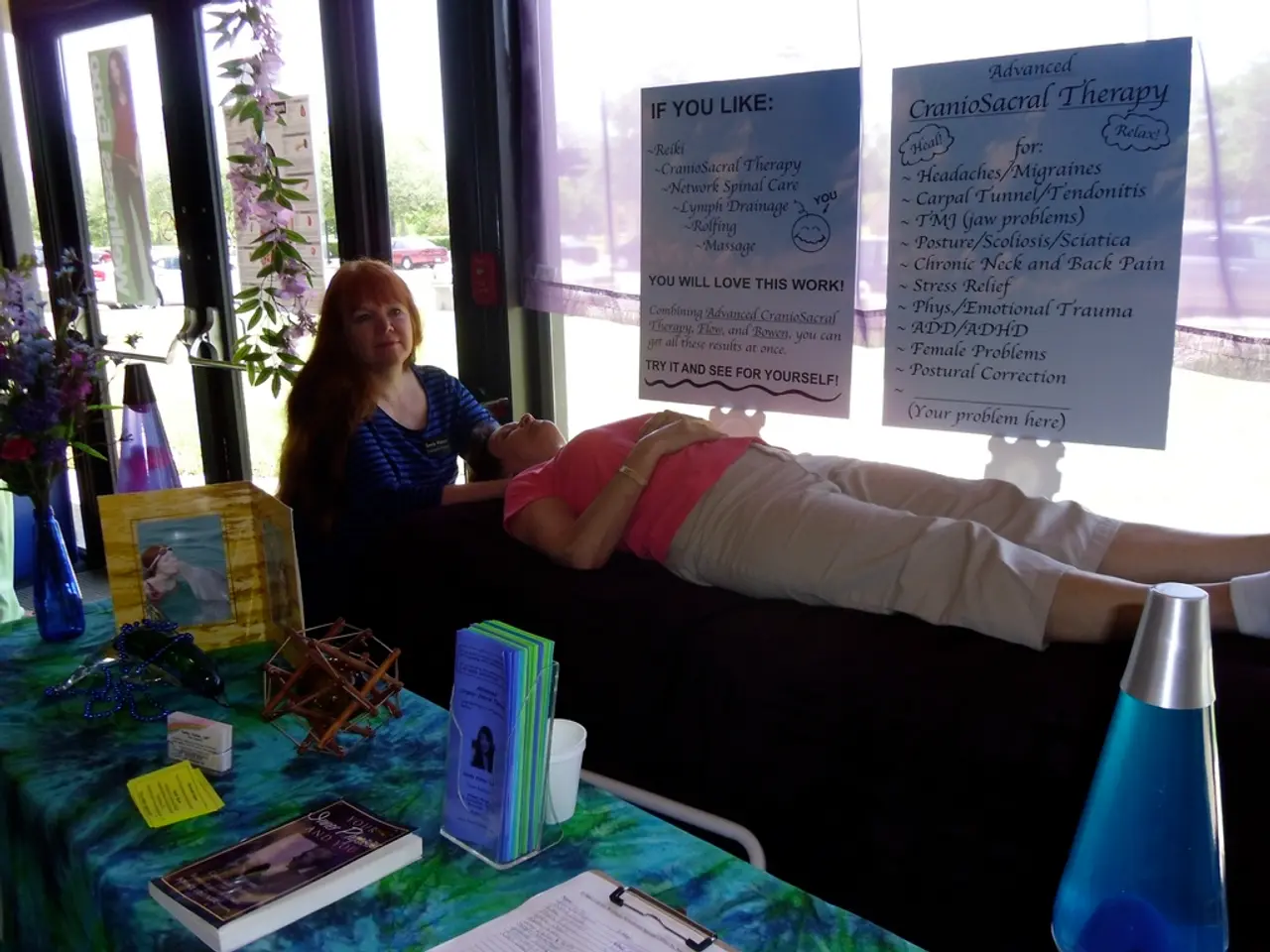Management of Muscle Rigidity and Spasms Associated with Cerebral Palsy
Managing Muscular Stiffness and Spasms in Cerebral Palsy: A Comprehensive Approach
Cerebral palsy, a disorder affecting movement and posture permanently, affects approximately 1 to 4 in every 1,000 births worldwide, making it the main cause of most disabilities seen in adolescents [1]. In this condition, spastic cerebral palsy, which accounts for 82.9% of cases, is characterised by an unnatural increase in muscle tone, causing stiffness and heightened reflexes [2].
Current management and treatment strategies for muscle stiffness and spasms in individuals with cerebral palsy primarily involve a combination of rehabilitation therapies, medications, and sometimes surgical interventions.
Physical Therapy (PT) and Occupational Therapy (OT):
Focusing on improving muscle strength, flexibility, balance, and mobility, PT and OT are crucial components of treatment. PT often includes stretching, strengthening exercises, gait training, and the use of assistive devices like braces or walkers. Whole-body vibration (WBV) therapy has recently shown promise in improving coordination and neuromuscular function, particularly in children with spastic diplegic cerebral palsy, although its effect on muscle tone is less clear [2][3]. OT aims to enhance fine motor skills and daily living activities by using adaptive equipment and functional exercises.
Medications:
A variety of medications are used to manage muscle stiffness and spasms in cerebral palsy. Muscle relaxants, or antispastics, such as baclofen, diazepam, and tizanidine, help reduce muscle stiffness and spasticity. In some cases, botulinum toxin (Botox) injections can be administered to target specific muscles and reduce localized spasticity. For severe or widespread spasticity, an Intrathecal Baclofen Pump (ITB) might be considered, which delivers baclofen directly into the spinal fluid. Anticholinergics and anticonvulsants may also be used when cerebral palsy is associated with seizures [2][3].
Orthopedic Surgery:
Orthopedic surgery may be considered to lengthen contracted muscles, correct skeletal deformities, or improve limb positioning, thereby reducing stiffness and improving mobility and pain management [3].
Additional Approaches:
Warm therapies, such as heat therapy, can make muscles more flexible and relaxed, helping manage muscular stiffness and spasms. Cold therapy can prevent muscular spasms and decrease inflammation. Eating a well-balanced diet and staying hydrated can provide dietary support for managing cerebral palsy, with nutrients like calcium, magnesium, vitamins B12, and D playing a significant role in improving muscle health.
Inertial sensors are wearable devices that provide objective information about spasticity by measuring joint angles and angular velocities during passive and dynamic movements. Sonoelastography in real time is another tool that assesses the flexibility of the muscle and measures variations in spasticity throughout time. The DROM Scale Evaluation offers a more complicated assessment of spasticity by evaluating the range of motion at various velocities, while the Modified Ashworth Scale (MAS) is a simple 6-point rating system used to measure resistance to passive movement in children with cerebral palsy, although its objectivity and reliability are limited.
Research is ongoing to develop targeted therapies that address the underlying neurological causes of movement disorders related to cerebral palsy. For example, research on specialized brain cells (striatal cholinergic interneurons) involved in motor control suggests potential future drug targets to treat dystonia, a complication causing abnormal muscle contractions [4].
These strategies are typically tailored to the individual’s severity of symptoms and functional needs, emphasizing multidisciplinary care to optimize mobility, reduce discomfort, and improve quality of life [2][3].
[1] Centers for Disease Control and Prevention. (2021). Cerebral Palsy: Fact Sheet. Retrieved from https://www.cdc.gov/ncbddd/cp/data.html
[2] American Academy of Pediatrics. (2017). Management of Spasticity in Cerebral Palsy: Clinical Report. Pediatrics, 140(Supplement 2), S113-S122.
[3] American Academy of Orthopaedic Surgeons. (2021). Cerebral Palsy. Retrieved from https://orthoinfo.aaos.org/en/diseases--conditions/cerebral-palsy/
[4] Brouwer-Bosdriesz, A. M., & Van den Wijngaard, R. (2018). Striatal Cholinergic Interneurons in Huntington's Disease and Related Disorders. Cold Spring Harbor Perspectives in Biology, 10(11), a034230.




